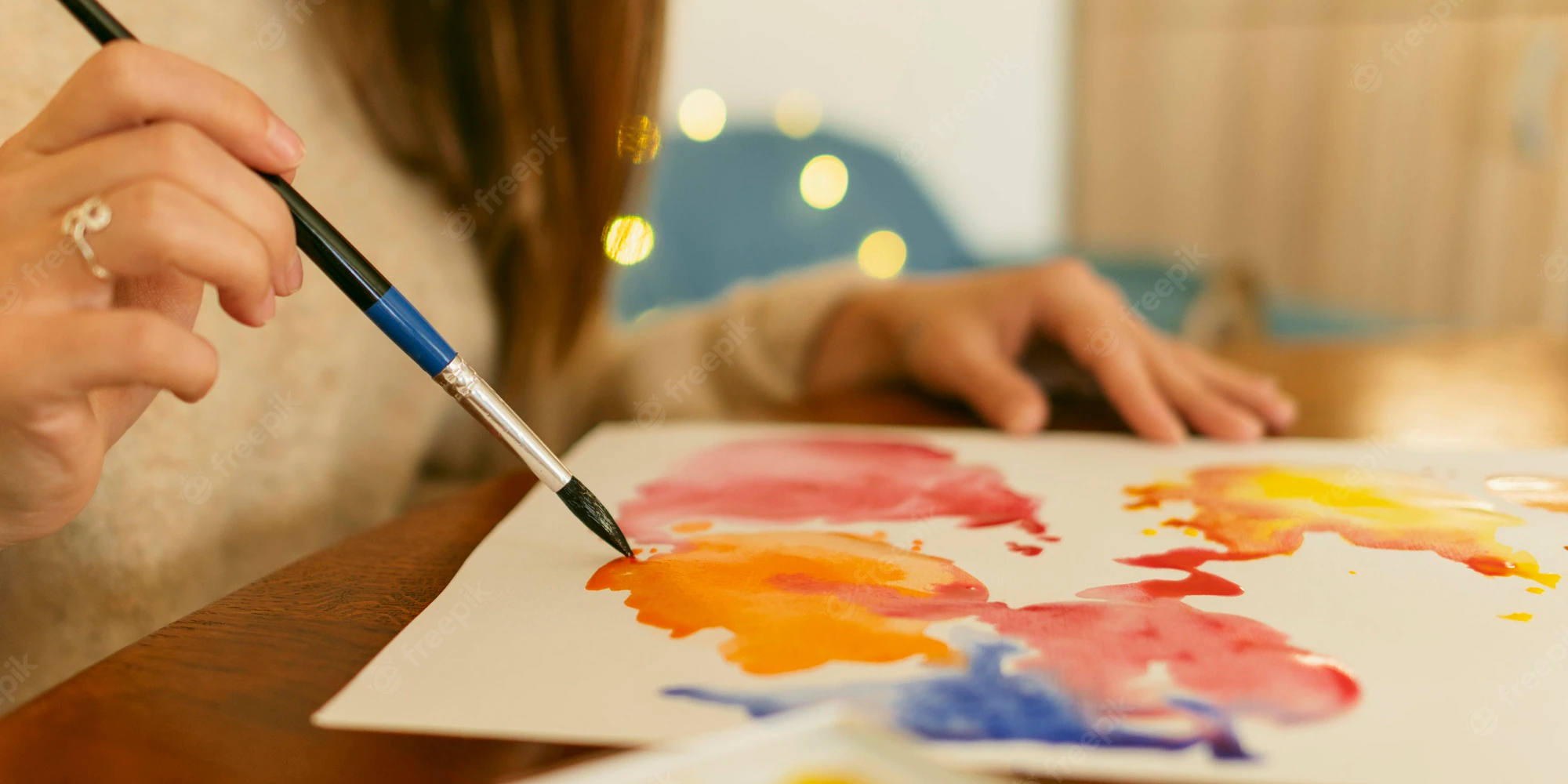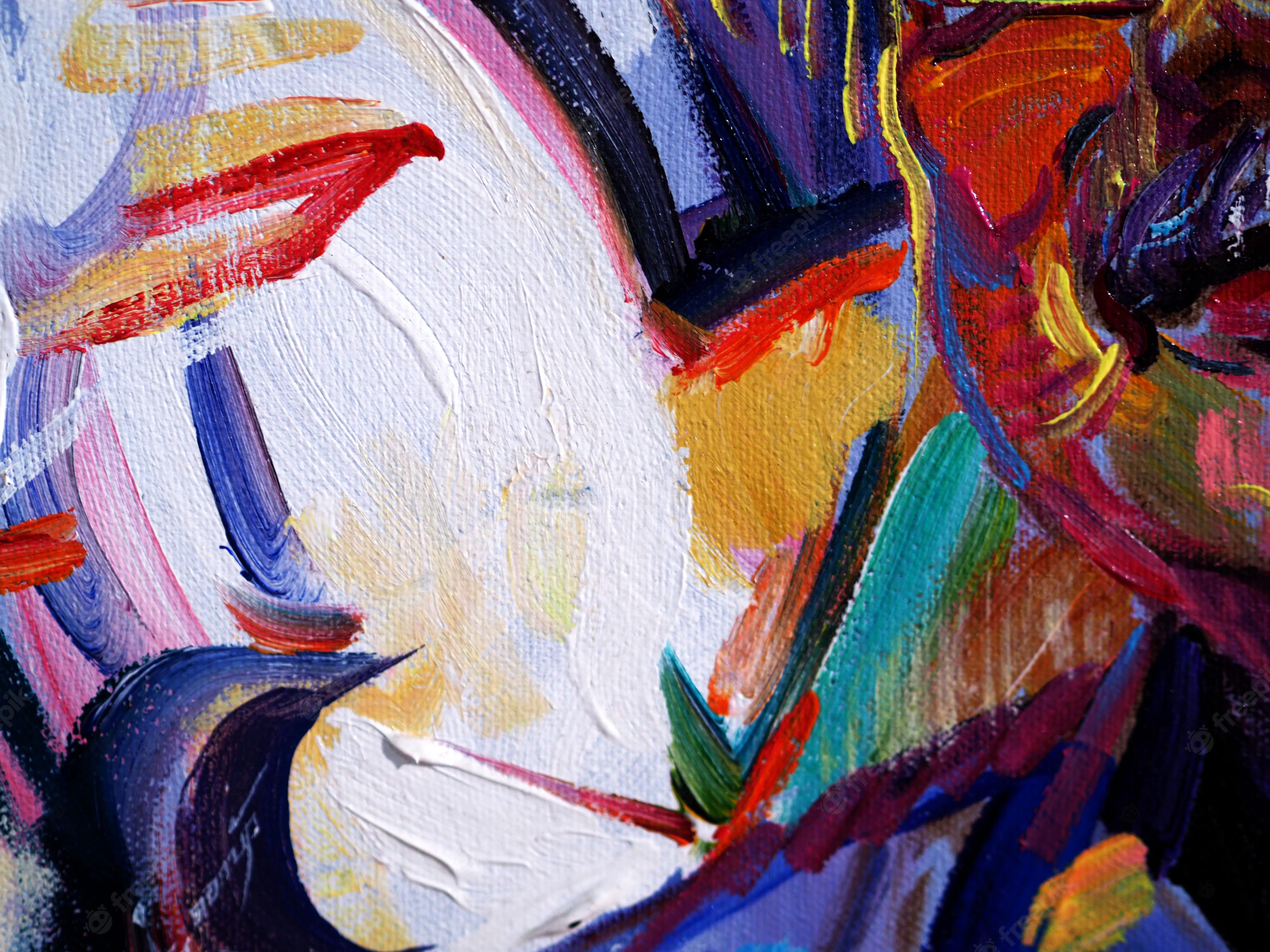Have you ever thought of applying acrylic paint on watercolor paper? This unique artistic combination can open up new and exciting possibilities in your art project and allow you to achieve rich, vibrant colors and bold textures.
You can use acrylic paint on watercolor paper. Watercolor paper is highly absorbent, making it a very suitable surface for acrylic paint. However, the application and its layering techniques may be different than what you’re used to with other traditional acrylic surfaces such as canvas, wood or metals. Therefore, the weight of the paper and the type of acrylic paint you use will also affect the outcome. It’s recommended to use a heavier weight paper (140 lb or higher) and to carefully choose acrylic paint that is designed for use on paper
In this blog, I will explore the different benefits of using acrylic paint on watercolor paper , tips and techniques for getting started. Whether you’re a beginner looking to try out some new techniques or an experienced painter, this is a fun and exciting way to add some variety to your art.
Related Reading: Can You Mix Acrylic Paint with Resin?
How To Apply Acrylics On Watercolor Paper


Materials
- Watercolor paper(at least 140 lb (300 gsm) weight. )
- Acrylic paint
- Brushes
- Palette
- Water
Optional: Mediums and varnishes can also be added to acrylic paint to change its consistency and finish.
Instructions
- Start by preparing your watercolor paper. You have to make sure it is stretched and secured to a board to prevent warping during the painting process.
- Next, prime the surface of the paper with a clear gesso. Priming is not a must but very important if you want the acrylic paint to adhere properly to the paper. You can choose to use gesso or any other primer.
- Paint your water color paper. Using a palette knife or brush, apply a thin layer of acrylic paint to the paper. You want to work in small sections at a time first. Then, use a dry brush to blend the paint as needed so that your painting comes out looking great.
- Continue adding 2-3 layers of acrylic paint, allowing each layer to dry before adding the next.
- Once you are satisfied with the overall coverage and the painting is dry, the next step is sealing it. Use a water based sealer such as Mod Podge Gloss Waterbase Sealer to protect your painting from damage, dust etc.
- Let it dry and frame or display it as desired..
Note: If you want to preserve your acrylic painting on watercolor paper, it is important to use UV-protective glass when framing it to prevent fading
Difference Between Watercolor Paper and Acrylic Paper
Even though they both have water-based properties, watercolor paper and acrylic paper are two different types of papers that are used for different types of painting and purposes.
Let’s start with watercolor paper. Watercolor paper is a heavy, absorbent paper that is made to handle the fluidity of most watercolor paints.
Well, it is made from 100% cotton fibers, which gives it more strength, durability and comes in various weights, textures, and surfaces. For beginners, this makes it less prone to yellowing and can be used for a variety of painting techniques.
Acrylic paper, on the other hand, is a paper that is specifically made to be used with only acrylic paint. The truth is – it is typically made from a mix of cellulose fibers and synthetic fibers. However, acrylic paint is more resistant to warping and buckling than watercolor paper and is also typically more affordable than watercolor paper.
In summary, Watercolor paper is acid-free and more absorbent and designed to handle fluidity of watercolor paint.
Preparing Watercolor Paper For Acrylic Painting?
There are a few steps you can take to prepare watercolor paper for acrylic painting:
- Soak the paper: Soak the watercolor paper in water for a few minutes before starting to paint. This will help to soften the fibers and make the paper more pliable.
- Stretch the paper: After soaking, stretch the paper by taping it to a board or frame to prevent the paper from buckling or warping as you paint.
- Apply a gesso primer: Apply a gesso primer to the paper will help to create a barrier between the paper and the acrylic paint, and will also provide a surface that the paint can adhere to more easily.
- Allow the paper to dry: Allow the paper to dry completely before starting to paint to ensure that the paint will not bead up or resist adhesion to the surface.
- Apply a fixative: To prevent smudging or bleeding, you can apply a fixative to the paper after you have finished painting, it will make the surface less absorbent and make the surface less permeable for the acrylic paint.
Note: Watercolor paper is not as sturdy as traditional canvas or board, so be gentle and use a light touch when painting to avoid damaging the paper.
How to Choose Watercolor Paper for Acrylic Paint?
When choosing watercolor paper for acrylic paint, consider the following factors:
- Weight: Watercolor paper is typically sold in weights of 90 lb, 140 lb, and 300 lb. The heavier the weight, the more durable and sturdy the paper will be.
- Surface texture: Most watercolor papers can have a smooth or rough surface. Acrylic paint can be used on both, but a rough surface may produce a more textured effect.
- Size: They comes in a variety of sizes, so choose one that is suitable for your painting project.
- Color: Watercolor papers can be white or off-white, and it’s important to consider how the color of the paper may affect the overall appearance of your painting.
- Brand and quality: Different brands of watercolor paper have different levels of quality. It’s best to do some research and choose a reputable brand with a good reputation for producing high-quality paper.
Ultimately, you should experiment with different types of paper to see which one you like best and works best with your acrylic paint.
Things To Consider With Watercolor Paper For Acrylic Paints
When using watercolor paper for acrylic painting, there are a few things to consider:
Absorbency: Watercolor paper is highly absorbent, which can cause the acrylic paint to dry quickly and lose its vibrancy. To combat this, you can use a slow-drying medium or add water to the acrylic paint to slow down the drying time.
Laying down a ground: It is not as sturdy as traditional canvas or board, so it’s important to lay down a ground (gesso primer) before painting, to protect the paper from the acrylic paint.
Surface texture: Watercolor paper can have a smooth or rough surface, which can affect the appearance of the acrylic paint. If you want a smooth surface, you may need to sand the paper before painting.
Color: The color of watercolor paper can be white or off-white, and it’s important to consider how the color of the paper may affect the overall appearance of your painting.
Stretching: Sometimes, water color will warp or buckle when wet, so it’s important to stretch the paper before painting to prevent this from happening.
Final coating: To prevent smudging or bleeding and to make the surface less permeable for the acrylic paint, you can apply a fixative or a varnish to the paper after you have finished painting.
Can You Use Acrylic Paint on Pastel Paper
You can use acrylic paint on pastel paper, but it’s important to keep in mind that the results may be different. Pastel paper has a unique texture and absorbency that’s specifically designed for use with pastels while acrylic paint, on the other hand, has a different texture and consistency, and it’s important to take that into consideration when using it on pastel paper.
Frequently Asked Questions
What Kind of Paper Should I Use for Acrylic Paint?
You can use a variety of papers for acrylic paint, including watercolor paper, canvas, and illustration board. Each type of paper has its own unique properties that can affect the final result of your painting. It’s best to experiment with different types of paper to see which one you like best and works best with your acrylic paint.
What Is the Difference Between Acrylic and Watercolour Paper?
The main difference between acrylic and watercolor paper is their absorbency. Watercolor paper is highly absorbent, while acrylic paper is less so. This can affect the way the paint dries and how much the paper can take before it starts to warp. Additionally, watercolor paper is often more delicate and thinner than acrylic paper.
Does Watercolor Stick to Acrylic Paint?
Watercolor can stick to acrylic paint, but it can also bead up and resist adhesion to the surface. To ensure that watercolor sticks to acrylic paint, it is important to prime the surface with gesso primer and make sure that the paint is fully dry before applying the watercolor.
Can You Put Acrylic Paint on Top of Watercolor?
Why not? you can put acrylic paint on top of watercolor, but it’s important to keep in mind that acrylic paint can be more opaque than watercolor, which may affect the final result of your painting. To avoid this, you can use a transparent or semi-transparent acrylic paint, or mix watercolor and acrylic paint to achieve a more blended effect.
How Do You Use Acrylic Paint With Watercolor?
To use acrylic paint with watercolor, you can paint with acrylic first and then add watercolor on top for an interesting layered effect. Alternatively, you can mix the two types of paint together on your palette before applying to the paper. It’s also important to make sure that the paint is fully dry before adding watercolor, and to prime the surface with gesso primer.
Can I Mix Watercolor and Acrylic?
Of course! You can mix watercolor and acrylic paint to achieve a more blended effect. This can be done by mixing the two types of paint together on your palette before applying to the paper. It’s also important to make sure that the paint is fully dry before adding watercolor, and to prime the surface with gesso primer.
Conclusion
Acrylic paint can be used on watercolor paper, but it’s important to keep in mind that the results may be different than when using traditional watercolor paint. Watercolor paper is highly absorbent, which can cause the acrylic paint to dry quickly and lose its vibrancy.
To combat this, you can use a slow-drying medium or add water to the acrylic paint to slow down the drying time. Additionally, it’s important to prime the surface with gesso primer, stretch the paper before painting to prevent buckling, and apply a fixative or a varnish after you have finished painting. Experimentation with different types of paper, paint and mediums before starting the final piece will help you determine the best way to work with the specific materials you’re using. With the right techniques and materials, you can achieve interesting and unique effects with acrylic paint on watercolor paper.
Sources
- Jackson art: EVERYTHING YOU NEED TO KNOW ABOUT PASTEL PAPER
- Strathmore Artist: 7 Watercolor Tips for Beginners






